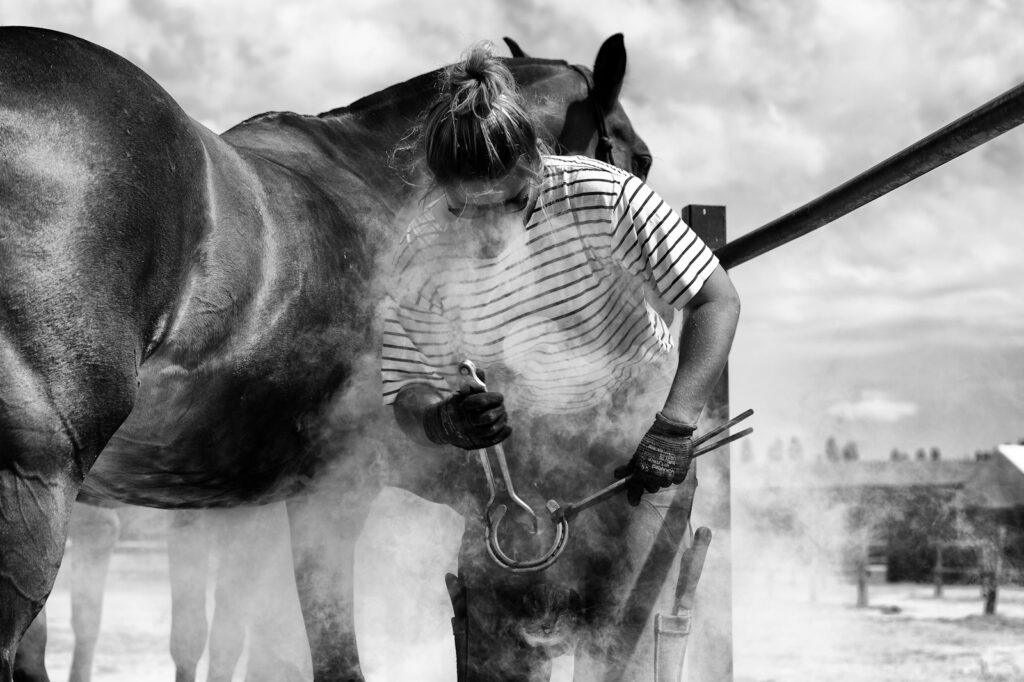Maintaining healthy hooves is a critical aspect of equine care that extends far beyond the scheduled visits from your farrier. While professional trimming and shoeing are essential cornerstones of hoof health, what happens during those 4-8 weeks between appointments can significantly impact your horse’s comfort, performance, and long-term soundness. Proper management of hoof growth isn’t merely about aesthetics—it’s about preventing potentially painful conditions, supporting your horse’s natural biomechanics, and establishing a foundation for overall equine wellness. This article explores comprehensive strategies for hoof maintenance that empower horse owners to take an active role in their equine partner’s hoof health, ensuring that those hooves remain in optimal condition regardless of when the farrier last visited.
Understanding Natural Hoof Growth Patterns
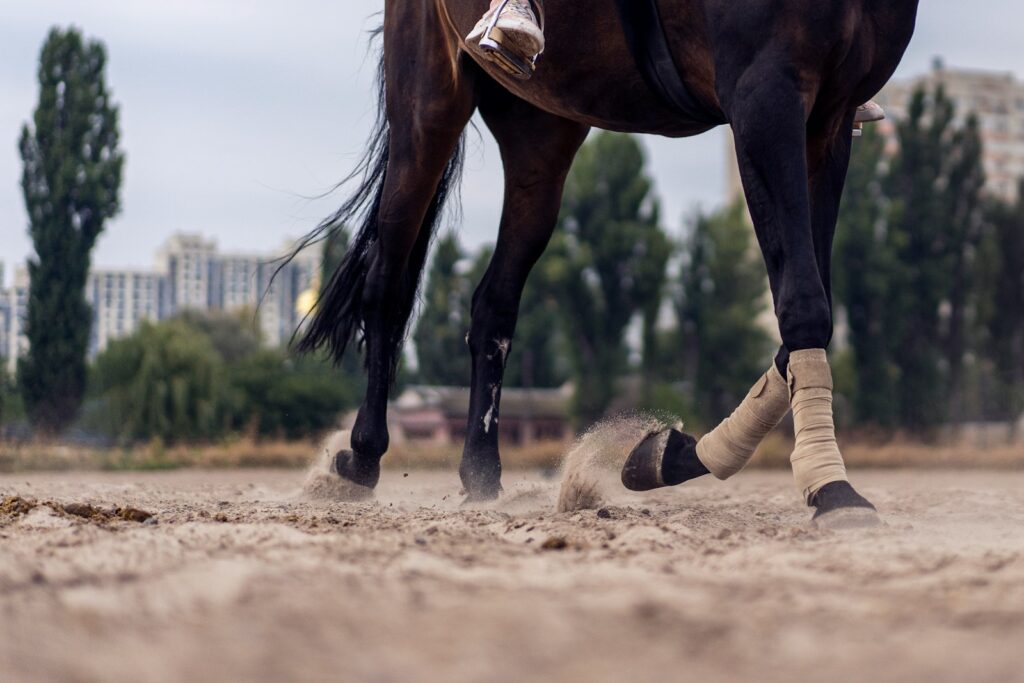
Horses’ hooves grow continuously throughout their lives, with the average hoof wall growing approximately 1/4 to 3/8 inch per month. This growth rate can vary significantly based on several factors including the horse’s age, nutrition, season, and overall health status. Younger horses typically experience faster hoof growth than older equines, while summer months often bring accelerated growth compared to winter. Environmental conditions play a crucial role too—horses living in moist environments may experience faster hoof growth than those in arid regions. Understanding your individual horse’s growth pattern allows you to better anticipate maintenance needs and schedule appropriate farrier visits, preventing the complications that can arise from overgrown hooves.
Creating an Effective Hoof Care Schedule
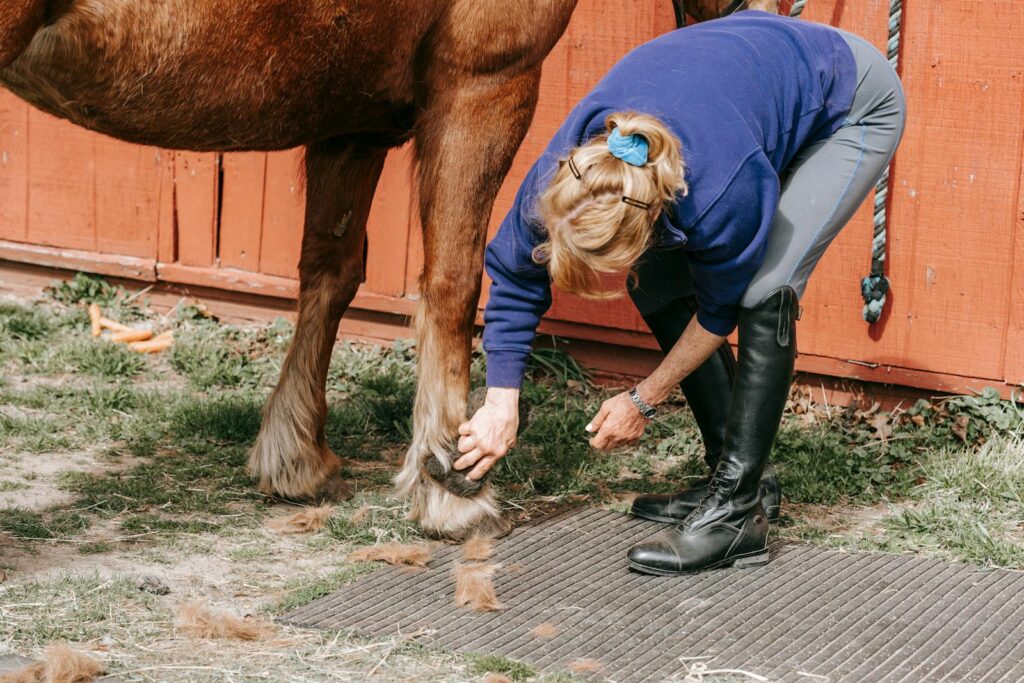
Establishing a consistent schedule for farrier visits forms the foundation of proper hoof maintenance. Most horses require professional attention every 6-8 weeks, though this timeframe may need adjustment based on your horse’s individual growth rate and specific needs. Performance horses, those with corrective shoeing requirements, or equines with particular conformational challenges may need more frequent visits, sometimes as often as every 4-5 weeks. During seasonal transitions, especially from winter to spring when growth often accelerates, consider shortening the interval between appointments. Document your horse’s hoof growth patterns and any issues that develop between visits to help refine the optimal schedule for your horse’s specific requirements.
Daily Inspection and Cleaning Routines
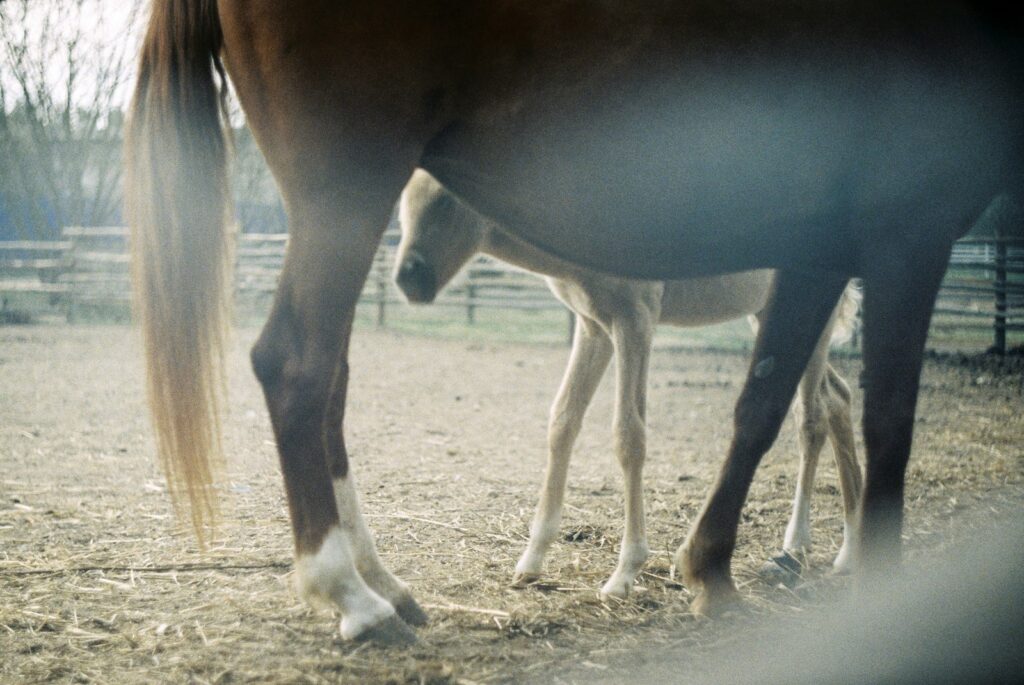
Implementing a thorough daily hoof inspection and cleaning routine represents one of the most valuable habits for maintaining hoof health between farrier visits. Use a quality hoof pick to remove packed debris, manure, and stones from the sole and around the frog at least once daily, and ideally after every ride. During cleaning, take time to check for signs of thrush (characterized by black, foul-smelling discharge), cracks in the hoof wall, or any unusual warmth or tenderness that might indicate brewing problems. Pay particular attention to the condition of shoes if your horse wears them—look for loosening nails, shifted position, or excessive wear. This daily ritual not only keeps the hooves clean but also provides an opportunity to catch minor issues before they develop into major problems requiring veterinary intervention.
Monitoring for Warning Signs of Imbalance
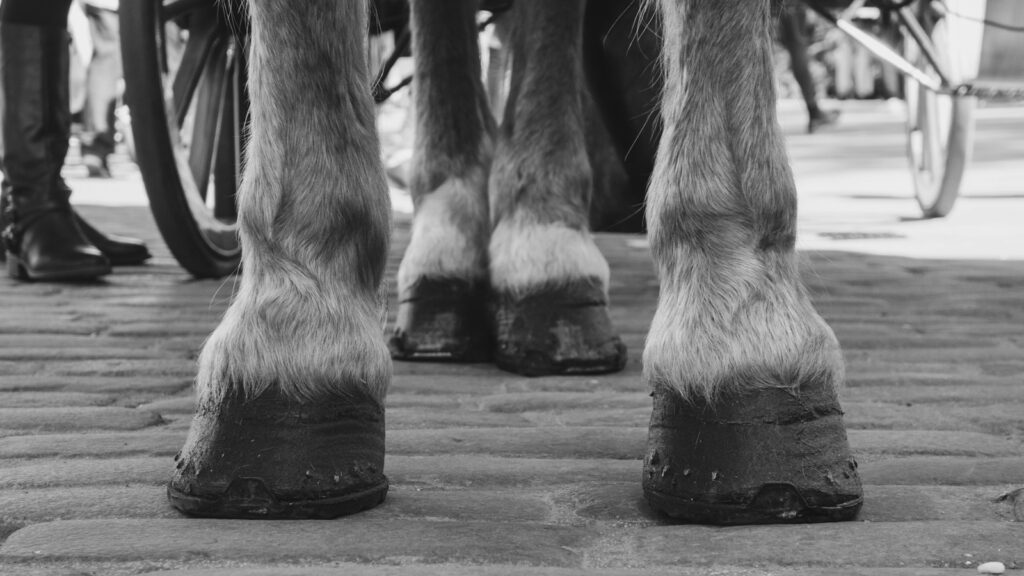
As hooves grow between farrier appointments, they can gradually develop imbalances that affect your horse’s way of going and potentially lead to lameness. Learn to recognize the early warning signs of developing imbalance, which may include uneven wear patterns, flares in the hoof wall, or changes in your horse’s stride or willingness to work. A horse that suddenly becomes reluctant to turn in one direction or shows increased stumbling might be experiencing discomfort from hooves that have grown too long or become unbalanced. Watch for signs that your horse is landing heel-first rather than flat or toe-first, which often indicates a need for trimming. Becoming adept at identifying these subtle changes allows you to determine whether an earlier-than-scheduled farrier visit might be necessary.
Appropriate Exercise for Healthy Wear
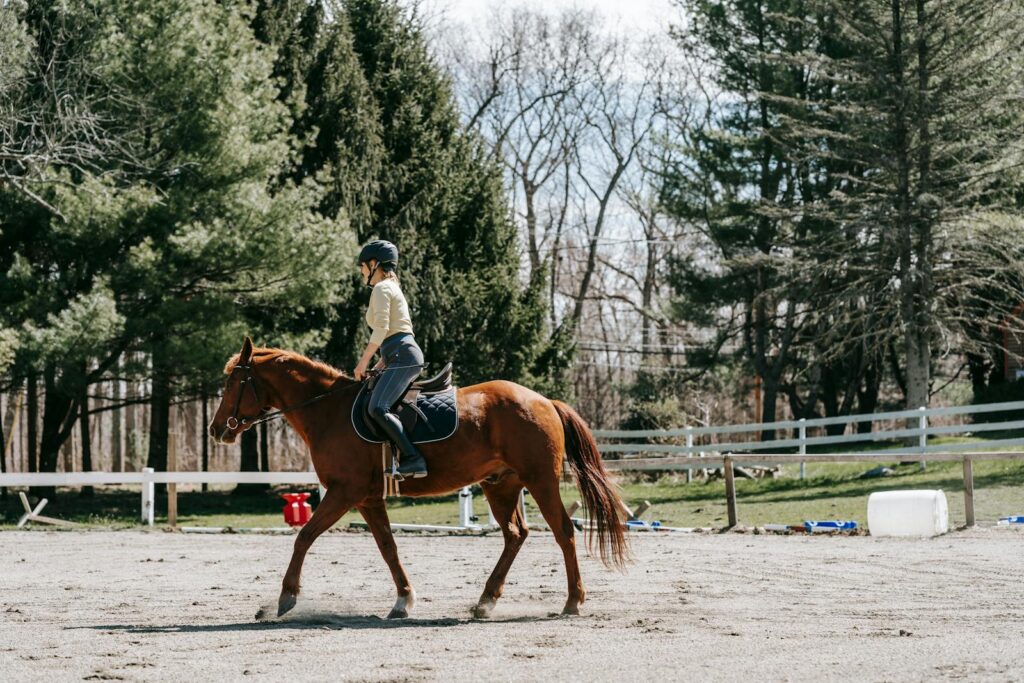
Strategic exercise plays a vital role in promoting natural wear patterns that help maintain hoof shape between farrier visits. Horses evolved to cover many miles daily across varying terrain, which naturally wore their hooves to appropriate proportions. Domestic horses confined to stalls and small paddocks lack this natural trimming mechanism. Providing regular exercise on different surfaces—including gravel paths, hard-packed dirt, and arena footing—encourages more even wear of the hooves. For barefoot horses especially, controlled exposure to abrasive surfaces can help prevent excessive growth at the toe, which is typically where overgrowth occurs most rapidly. However, exercise should be introduced gradually, as sudden exposure to hard or rough surfaces can cause bruising or soreness in horses accustomed to softer footing.
Nutrition’s Impact on Hoof Growth and Quality
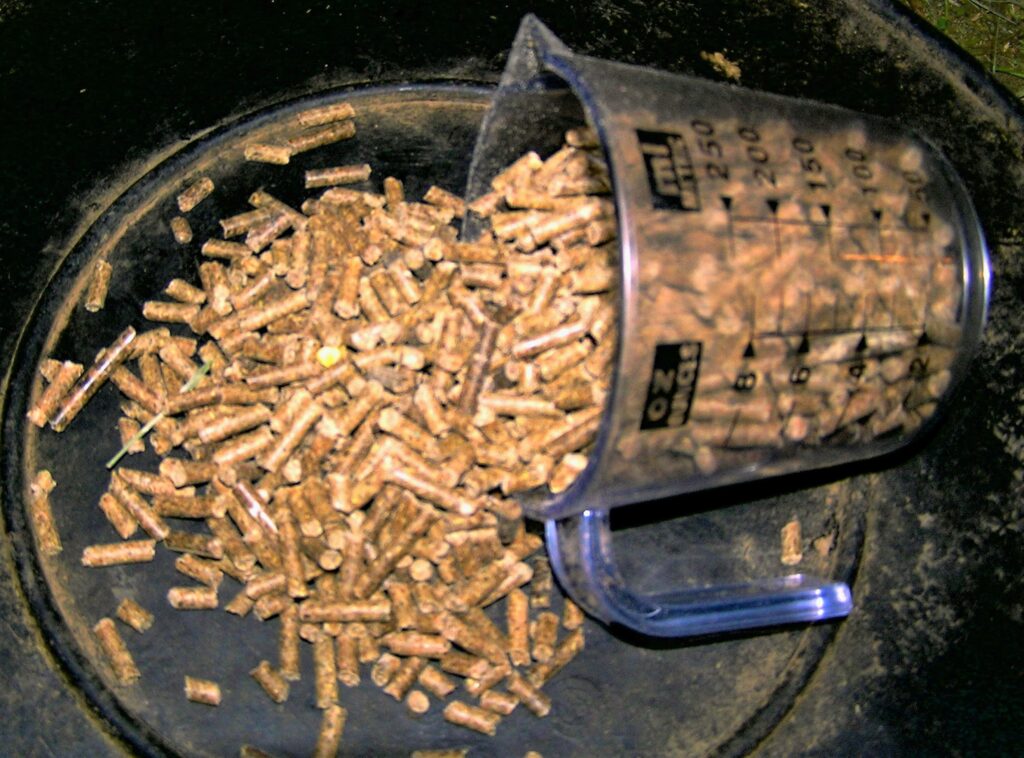
The quality and rate of hoof growth are directly influenced by your horse’s diet, making nutrition a powerful tool for maintaining optimal hooves between farrier visits. Biotin, a B-vitamin, has been scientifically proven to improve hoof quality when supplemented at levels of 15-20 mg daily, though results typically take months to become visible. Essential amino acids like methionine and lysine serve as building blocks for the protein keratin, which forms the structural component of the hoof wall. Minerals including zinc, copper, and calcium play critical roles in hoof integrity, while omega-3 fatty acids help maintain moisture balance within the hoof. Consult with an equine nutritionist to develop a feeding program specifically tailored to support your horse’s hoof health, considering factors such as age, workload, existing hoof conditions, and regional soil deficiencies that might affect forage quality.
Moisture Management for Optimal Hoof Condition
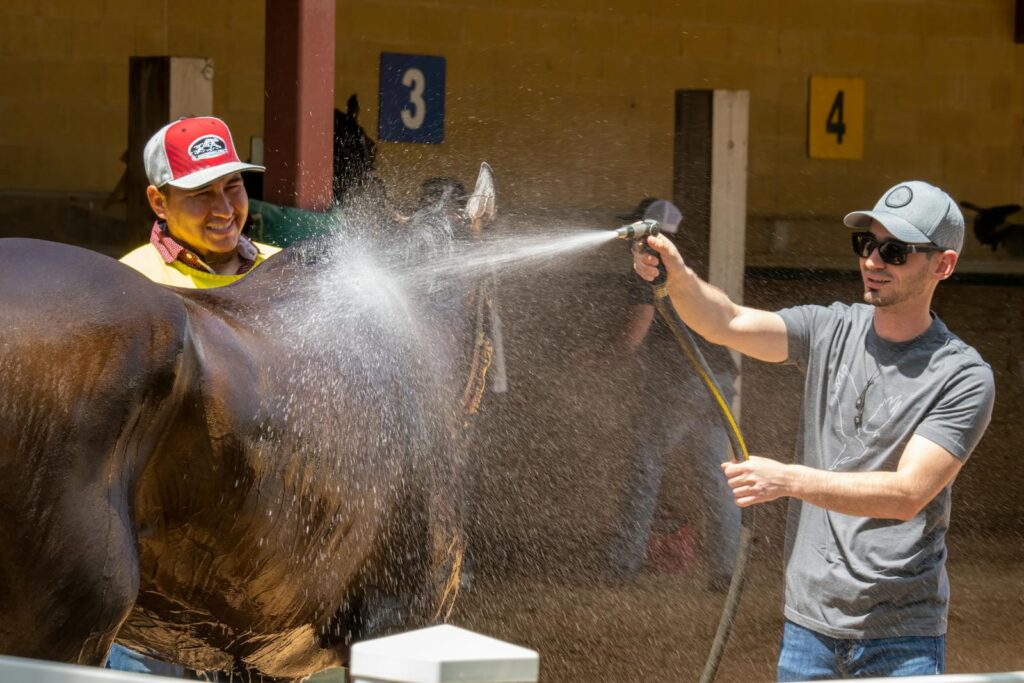
Maintaining appropriate moisture levels in the hoof is critical for preserving hoof integrity between farrier visits. Hooves that become too dry can crack and chip easily, while excessively wet hooves may become soft and prone to bacterial infections. Environmental conditions often dictate hoof moisture levels—horses kept in wet environments may develop soft hooves that wear too quickly, while those in arid conditions may struggle with brittle, cracking hooves. During dry periods, consider brief daily soaking or application of a high-quality hoof moisturizer to the hoof wall (not the sole or frog). Conversely, in persistently wet conditions, ensure your horse has access to dry standing areas and consider using a hoof hardener as recommended by your farrier or veterinarian. Striking the right moisture balance helps maintain hoof integrity and reduces the risk of cracks developing between trims.
Topical Products: Selecting and Applying Effectively
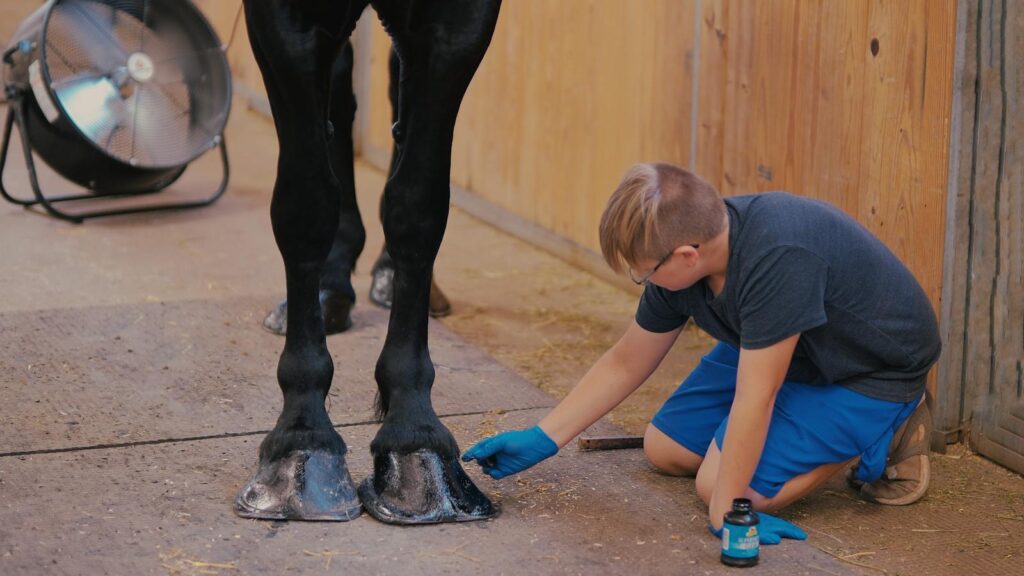
The market offers numerous hoof care products, but selecting the right options for your horse’s specific needs requires careful consideration. Hoof oils, dressings, and conditioners should be chosen based on your environmental conditions and your horse’s particular hoof challenges. Products containing pine tar can help protect against excess moisture and have antimicrobial properties beneficial for thrush prevention. Lanolin-based dressings provide excellent moisture-sealing benefits for dry, brittle hooves but should be used sparingly in wet conditions. When applying any topical product, focus on the hoof wall rather than the sole or frog unless specifically directed by your veterinarian, as excessive moisture in these areas can promote bacterial growth. Maintain a consistent application schedule as recommended for your chosen product, and document the results to determine effectiveness for your individual horse.
Managing Barefoot Transitions
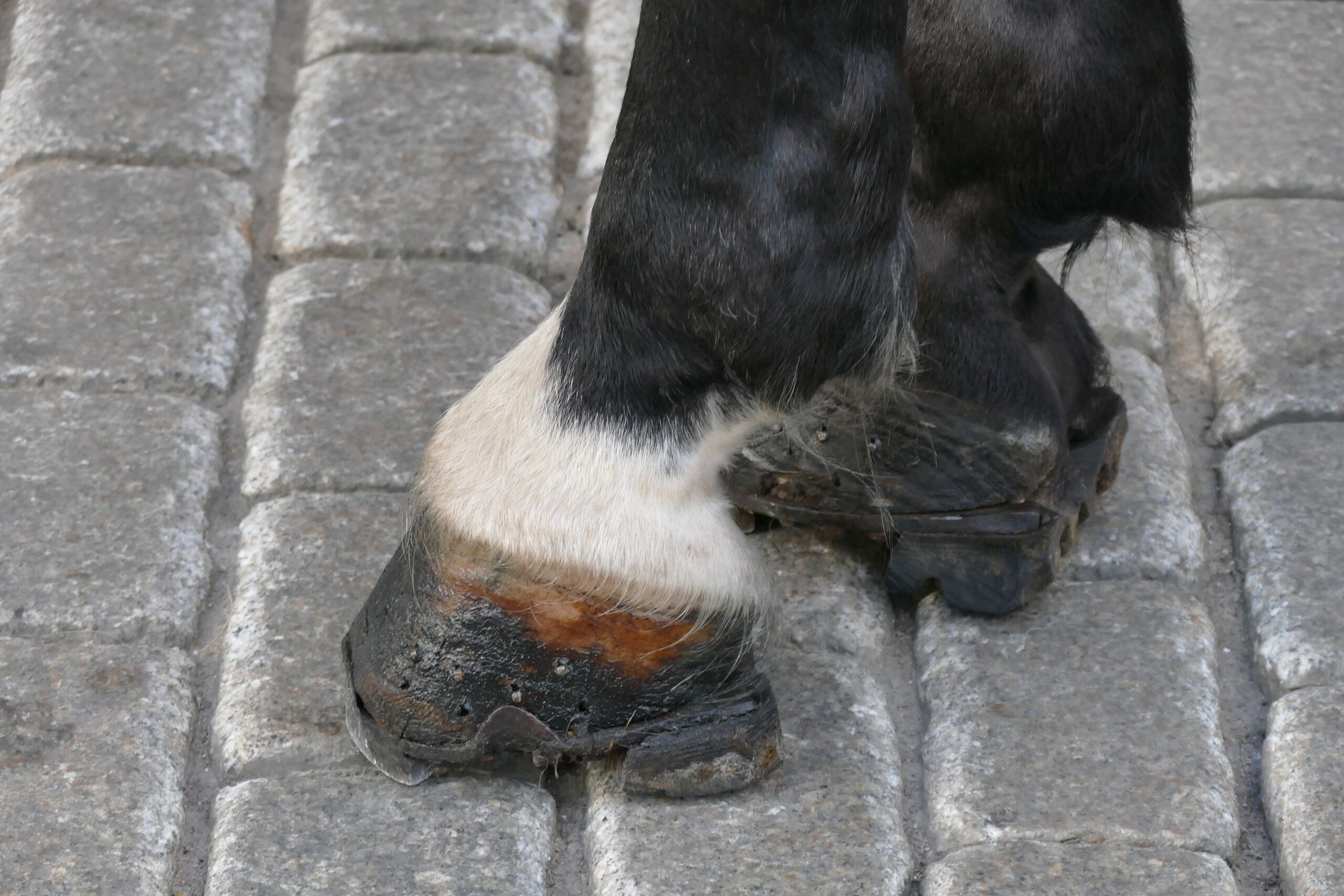
Horses transitioning from being shod to barefoot require especially vigilant monitoring of hoof growth and wear patterns between farrier visits. The transition period can last anywhere from a few months to more than a year as the hoof adapts to functioning without shoes. During this time, hooves often need more frequent trimming—sometimes every 3-4 weeks initially—to prevent chipping and cracking as the hoof wall strengthens. Closely monitor for signs of sensitivity on different surfaces, and consider using protective boots when riding on rough terrain until the hooves develop adequate toughness. Stimulating circulation through daily movement is particularly important during barefoot transition, as increased blood flow to the feet supports stronger hoof growth. Documentation of your horse’s comfort levels, wear patterns, and any sensitivity issues helps track progress throughout the transition.
Special Considerations for Shod Horses
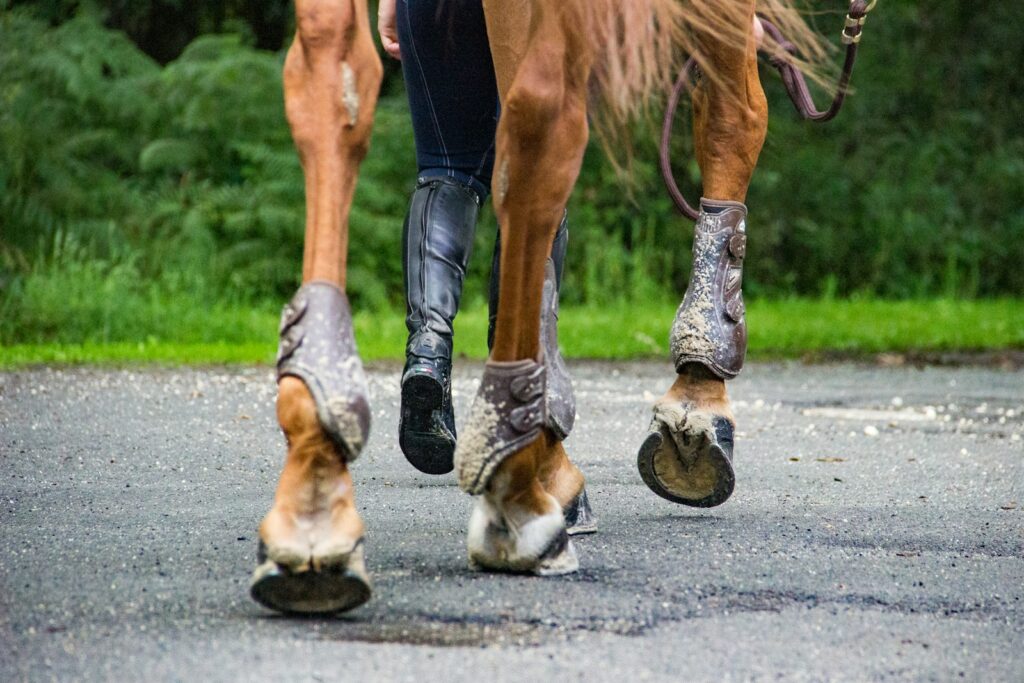
Horses wearing shoes require specific attention to ensure the shoes remain functional and properly positioned as the hoof grows between farrier visits. Check regularly for signs that shoes may be shifting, such as visible gaps between the shoe and hoof wall, protruding nail heads, or a “clicking” sound when the horse walks on hard surfaces. Monitor for “sprung” shoes (partially pulled away from the hoof) or twisted shoes that could cause uneven loading of the limb. Pay close attention to wear patterns on the shoes themselves—uneven wear may indicate balance issues that need addressing at the next shoeing. After riding through muddy or sandy conditions, carefully clean packed material from around the shoe to prevent pressure on the sole and reduce moisture retention. If a shoe becomes loose or is lost entirely, contact your farrier immediately rather than waiting for the next scheduled appointment.
Seasonal Adjustments to Hoof Care
Adapting your hoof care routine to seasonal changes helps maintain optimal hoof health throughout the year. During spring, when moisture levels typically increase and hoof growth accelerates due to hormonal changes, more frequent cleaning and potentially shorter intervals between farrier visits may become necessary. Summer heat and dryness often require additional moisturizing of the hoof wall to prevent cracking, while also necessitating vigilance for signs of sole bruising from hard, dry ground. Fall season brings its own challenges as horses transition from summer growth patterns and environmental conditions change. Winter presents unique challenges including snow compaction in the hooves, ice ball formation with certain types of shoes, and slower growth rates that might allow for longer intervals between farrier visits. Each seasonal transition warrants reassessment of your maintenance routine and possibly consultation with your farrier about appropriate adjustments.
Emergency Care for Cracks and Chips
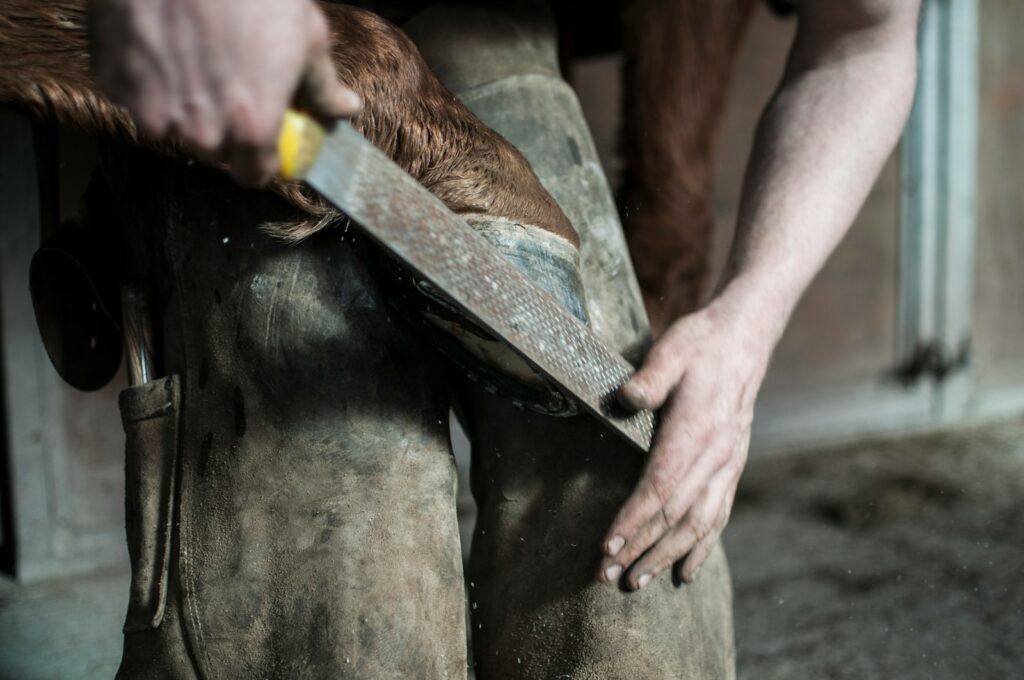
Despite your best management practices, occasionally hooves may develop cracks or chips between regular farrier visits that require immediate attention. Small, horizontal cracks that don’t extend upward into the coronary band can often be managed by filing the edges smooth to prevent further tearing and applying a hoof hardener to the area. Vertical cracks demand more concern, especially those extending upward toward the coronary band or those causing any lameness. For significant cracks or chips that affect more than the very bottom edge of the hoof, consult your farrier promptly rather than waiting for your next appointment. Temporarily reducing work intensity and keeping the affected area clean can help prevent worsening of the condition until professional assistance is available. Document when and how the damage occurred, as this information helps your farrier determine the underlying cause and develop appropriate prevention strategies.
Building a Collaborative Relationship with Your Farrier
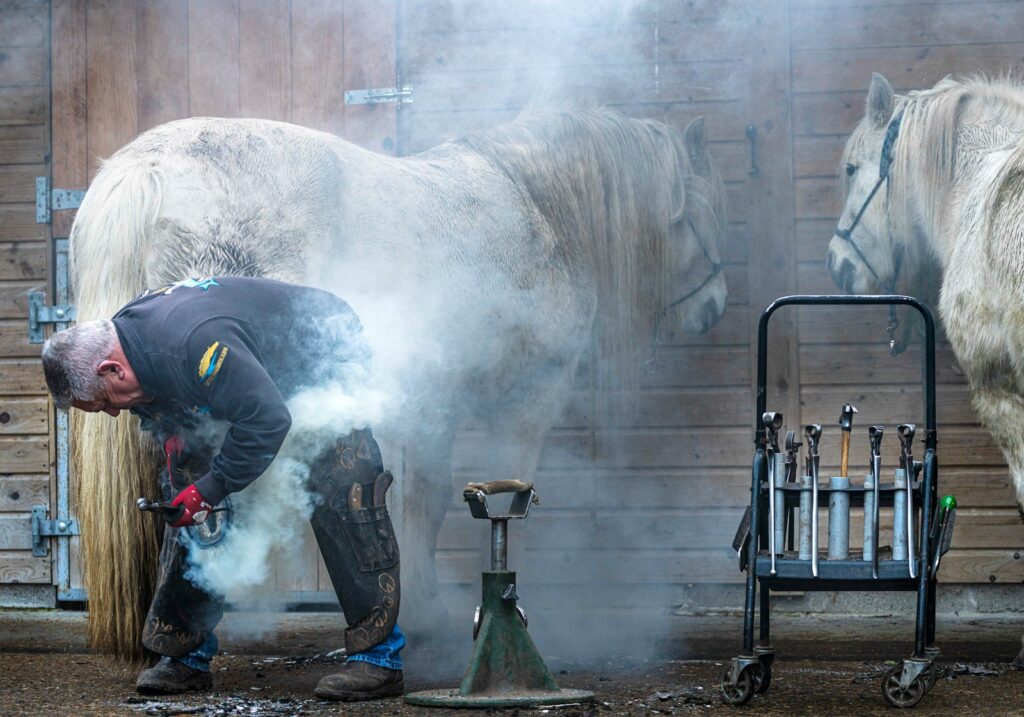
Developing a strong working relationship with your farrier creates a foundation for excellent hoof care that extends beyond their physical presence at your barn. Clear communication about your horse’s work schedule, performance issues, or any changes you’ve observed in hoof condition helps your farrier make informed decisions about trimming and shoeing approaches. Don’t hesitate to ask questions about specific maintenance you can perform between visits or request demonstrations of techniques for addressing minor issues. Many farriers appreciate receiving photos of concerning developments rather than waiting until the next appointment to address them. Keep a dedicated hoof care journal documenting observations, products used, and their effectiveness to share with your farrier. This collaborative approach ensures continuity of care and ultimately results in healthier hooves for your equine partner.
In conclusion, effective management of hoof growth between farrier visits requires a multifaceted approach combining vigilant monitoring, appropriate environmental management, and consistent care routines. By understanding your horse’s individual hoof growth patterns and implementing targeted strategies for maintenance, you can significantly reduce the risk of developing painful conditions and support optimal performance. Remember that hoof care is truly a daily commitment rather than a periodic intervention—the attention you provide between professional trimmings plays an equally important role in your horse’s hoof health as the farrier’s skilled work. With consistent application of these best practices, you’ll establish a foundation for long-term soundness that benefits both you and your equine partner for years to come.

